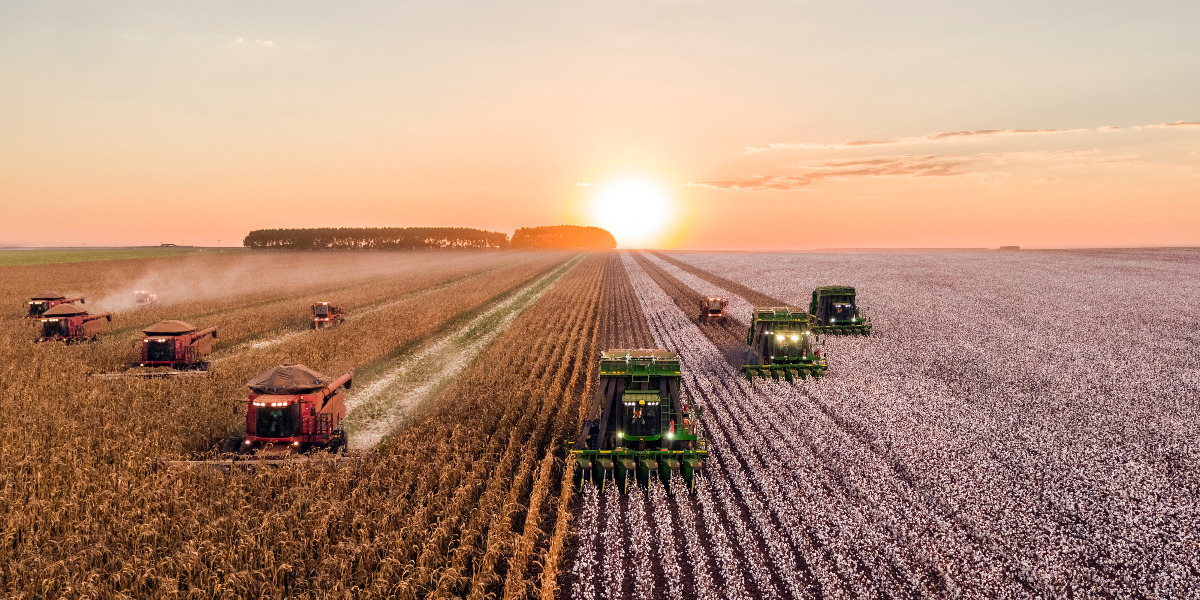AWS Public Sector Blog
Mission: Technology-enabled, sustainable agriculture
I grew up in a farming community in Kentucky, and understand how critical agriculture is to the development of a thriving and robust economy. I also understand the important role technology plays in driving innovation and sustainability in agriculture.
The United Nations Director-General José Graziano da Silva said in 2018 that sustainable farming and agriculture is “key” to eliminating world hunger. So, what can technology do to make farming and agriculture more sustainable and climate-resilient? How can we make sure crops are high quality and high yield? How do we make sure that we get them to market when they are fresh? How can we improve the way farmers interact with each other? Our customers are helping to answer these questions.
AWS customers around the globe already use the advanced capabilities offered in the cloud, like machine learning (ML), artificial intelligence (AI), and Internet of Things (IoT), to accelerate innovation in agriculture. The use of technology is leading to higher crop productivity, greater preservation of natural resources, a safer and more resilient food supply chain, and sustained progress in closing the hunger gap.
I am excited and inspired by the level of energy and engagement on this topic. The cloud can offer farmers around the globe the tools they need to increase efficiency and output.
Connecting India’s farming communities
Over half of India’s population depends on agriculture, and up to one-third of India’s gross domestic product (GDP) is derived from its farming community. In its 2020 budget, the Government of India proposed a 16-point plan to boost its agrarian economy, including investment in a more efficient online marketplace, warehouses with geotagging, and applying AI and ML to optimize farming output.
Startups in India are also embracing the cloud to support the agriculture sector. Over 450 startups in India are focused on building cloud-based solutions to help farmers, which is made possible because of their easy access to cloud-based infrastructure.
For example, the Indian Farmers Fertiliser Cooperative Limited (IFFCO) has a mission to look after the welfare of India’s farmers. As part of this mission and in line with the national digital initiative, IFFCO wanted to connect rural farmers through a digital platform.
They previously used on-premises computing and a co-location environment. They switched to AWS when they found out that they could have a new e-commerce portal live in less than a week—rather than three to four weeks. IFFCO then added video streaming in just three months.
By switching to the cloud, IFFCO generated cost savings and efficiency gains. Farmers benefited, too. The e-commerce platform allowed them to make online purchases and eliminate travel time, while videos on farming methods helped some increase crop yields by more than 25 percent.
Experimenting with agricultural solutions in Africa
A similar approach is taking root in Africa where startups across the continent are experimenting with agricultural solutions on AWS.
Wefarm powers the world’s largest farmer-to-farmer digital network and serves one of the largest populations in the world of agriculture. Using ML on AWS, Wefarm enables knowledge sharing among smallholder farmers.
Wefarm is a free, peer-to-peer knowledge sharing service that enables farmers to exchange information via SMS text, without the internet and without having to leave their farm. Farmers can ask questions about anything agricultural and receive crowd-sourced answers from other farmers around the world in minutes.
Wefarm plays an important role in using technology to develop the food supply and build resilience for smallholder farmers. Using efficient and effective back-end AWS technology, it is possible to bring their services to the farmers around the world—no matter how remote.
Helping make agricultural systems transparent and sustainable
Technology is also helping farmers collect more data about their crops than ever before. Cloud is helping them make sense of that data.
GREENSPIN, a startup company from Würzburg, Germany, uses data analytics for better agriculture. They combine Earth Observation (EO) Data, AI, and spatial web applications to solve challenges for different stakeholders in the agricultural value chain. This includes smart farming providers, grain processors, and public authorities. And, it all comes down to spatial agricultural intelligence: identifying where fields are, what grows, and what happens on them in near real-time throughout the season.
For example, the 2018 heatwave in central Europe resulted in major crop losses, but the amount lost could only be determined after the harvest. This was challenging for government authorities who needed to distribute financial aid to affected farmers. It also affected the industry, grain traders, and processors who need reliable crop yield numbers for planning. EO satellite data can quickly provide a clearer picture of what is really going on in the field in near real-time.
Through these examples, we see that using the AWS Cloud can change the dynamics in agriculture. And yet, there is more that can be done: technology companies can participate in creating a robust agricultural economy by developing scalable business tools and technology, and by encouraging the connections between private and public sector organizations committed to innovation in support of growing a sustainable agrarian economy.
What other global challenges would you like to see solved by leveraging the always-on, power of the cloud?
